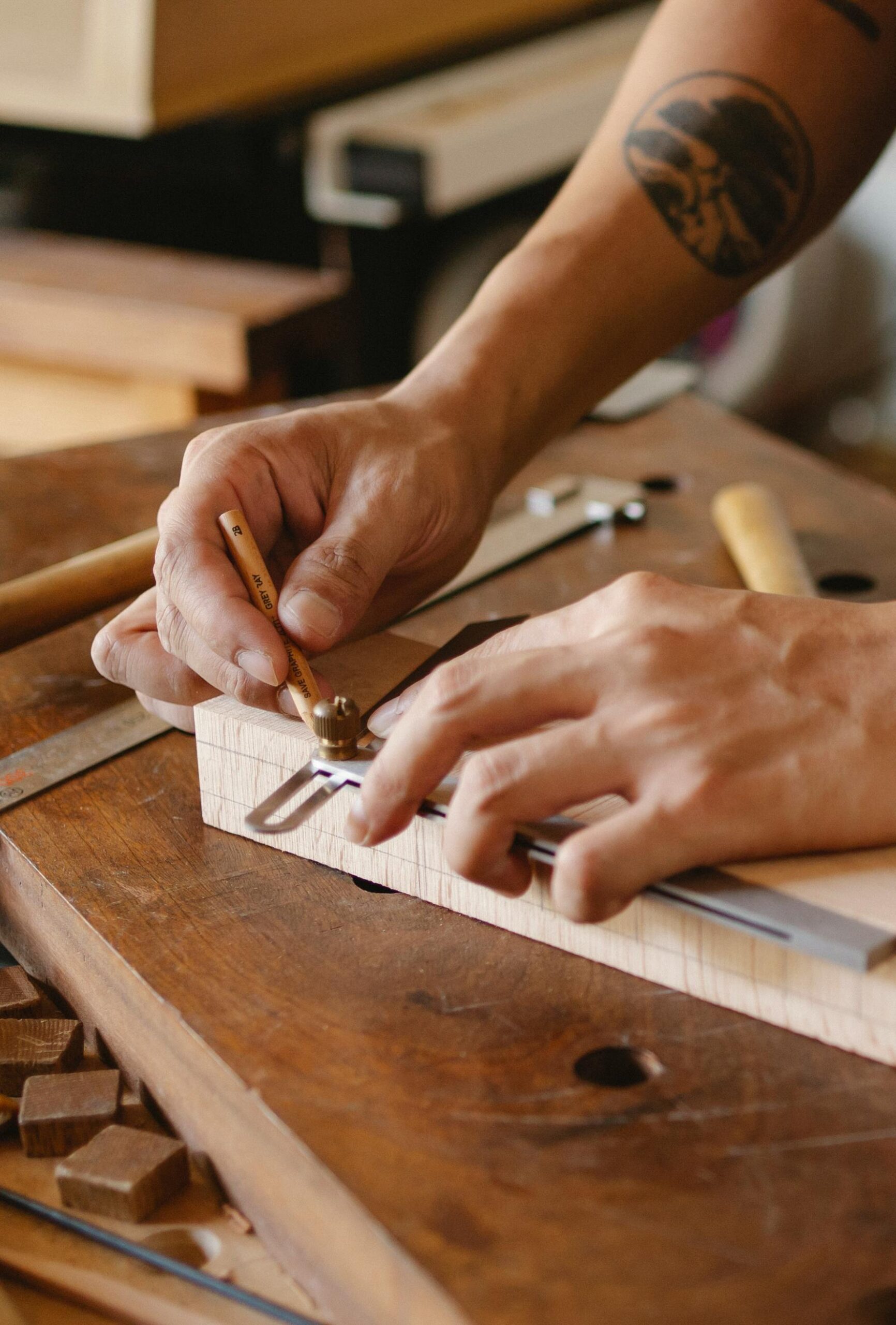Understanding and Using a Doweling Joiner
Doweling joiners are essential tools in woodworking. They create strong joints without visible fasteners. Woodworkers rely on them for creating clean and professional-looking projects. This article explains how doweling joiners work, their benefits, and tips for using them effectively.
How Doweling Joiners Work
Doweling joiners help align, drill, and join wood pieces using dowels. Dowels are cylindrical rods, usually made of wood. They fit into drilled holes in the joining pieces. Once glued and assembled, the dowels hold the pieces together securely.
To use a doweling joiner, first mark the wood pieces. Ensure the marks align perfectly where the dowels will go. Next, set the joiner’s depth gauge to match the length of the dowels. This prevents drilling too deep or shallow holes.
Position the doweling joiner on the marked spot. Activate the tool to drill precise, straight holes. Repeat this step for all pieces to join. Align the pieces, insert the dowels, apply wood glue, and then clamp everything until the glue dries.
Benefits of Using a Doweling Joiner
Doweling joiners offer several advantages in woodworking projects:
- Strong Joints: Dowels distribute force along the entire joint, making it sturdy.
- Invisible Fasteners: No need for screws or nails, resulting in a clean look.
- Consistent Results: Ensures precise alignment and uniformity.
Choosing the Right Doweling Joiner
There are various types of doweling joiners, each suited for different tasks. Manual doweling jigs require more skill but offer control. Electric doweling joiners are faster and more efficient. When choosing a doweling joiner, consider the complexity of your projects and your skill level.
Another factor is the size and type of dowels you’ll use. Ensure your chosen tool can accommodate the dowels needed for your projects.
Tips for Effective Doweling
Accurate marking is crucial. Use a sharp pencil and a square to ensure straight lines. Also, practice on scrap wood. This helps you get a feel for the joiner and perfect your technique without risking your project materials.
Clamping is essential when gluing dowels. Use sufficient clamps to hold the pieces together while the glue dries. It prevents misalignment and ensures a tight joint.
Choosing the right glue also matters. Titebond and Gorilla Wood Glue are popular choices. They offer strong adhesion and easy cleanup. Apply glue sparingly to avoid excess squeezing out, which can be messy and weaken the joint if not cleaned properly.
Maintenance and Care for Doweling Joiners
Regular maintenance keeps your doweling joiner in good working order. Clean the tool after each use. Remove wood dust and debris from the drilling bits and guides. Lubricate moving parts occasionally following the manufacturer’s instructions.
Store doweling joiners in a dry place. Moisture can cause rust, especially on metal components. If your dowels are wooden, store them in a place with stable humidity to prevent warping.
Common Issues and Troubleshooting
Misalignment can occur if the marks on the wood pieces don’t match up correctly. Double-check your measurements before drilling. Use a doweling jig or fence to help guide and ensure precision.
Splintering around the hole edges can be minimized by placing a scrap piece of wood beneath the drilling surface. This supports the wood fibers and reduces tear-out.
If dowels are too tight, lightly sand them before insertion. This ensures they fit without splitting the wood. Conversely, if they are too loose, consider using slightly larger dowels or additional glue to fill gaps.
Advanced Techniques
Mitred joints with dowels add strength to angled connections. This technique requires precise angle measurements and drilling. Use adjustable angle jigs to help with accuracy. Experiment with different dowel sizes and placements to achieve the best results for your specific project.
Combining doweling with other joinery methods can enhance the overall strength and aesthetics of a project. For instance, using dowels with mortise and tenon joints provides extra support and security.
Projects to Try with Doweling Joiners
Beginner projects like picture frames and small boxes are great for practicing doweling techniques. These projects often use simple, straight joints and require few dowels.
As you gain confidence, progress to furniture pieces like coffee tables, chairs, and bookcases. These projects involve more complex joints and larger dowels.
Creating decorative items with dowels can also be rewarding. Wall art, clocks, and even toys can benefit from concealed dowel joinery for a polished look.
Safety Considerations
Always wear safety glasses when using a doweling joiner. Drilling generates wood shavings and dust which can cause eye injury. A dust mask is also advisable to avoid inhaling fine particles.
Secure your workpiece firmly before drilling. A loose piece can slip, leading to inaccurate holes and potential injury. Follow the manufacturer’s safety guidelines for your specific doweling joiner model.
Environmental Impact
Using dowels reduces reliance on metal fasteners, which have a larger carbon footprint. Woodworkers can also opt for dowels made from sustainable or reclaimed wood sources. These choices contribute to more environmentally conscious woodworking practices.
Choose non-toxic wood glues to minimize harmful chemical exposure. Many woodworking glues now offer eco-friendly formulations without compromising strength.
